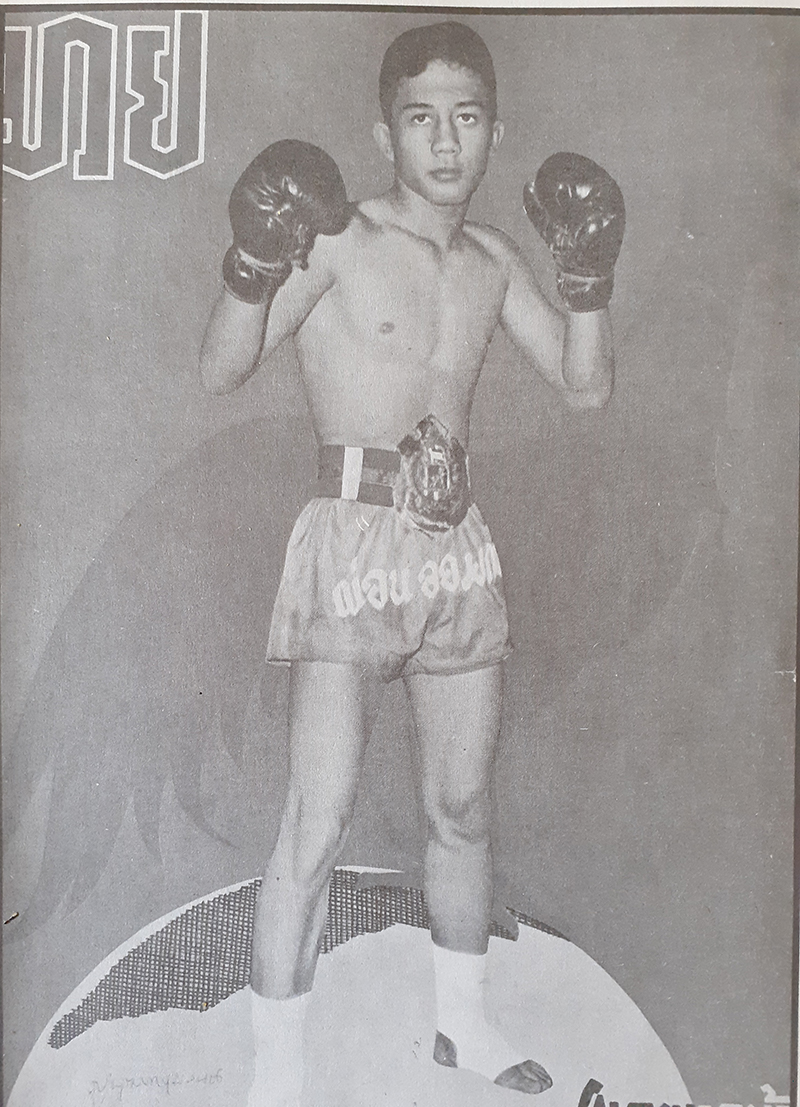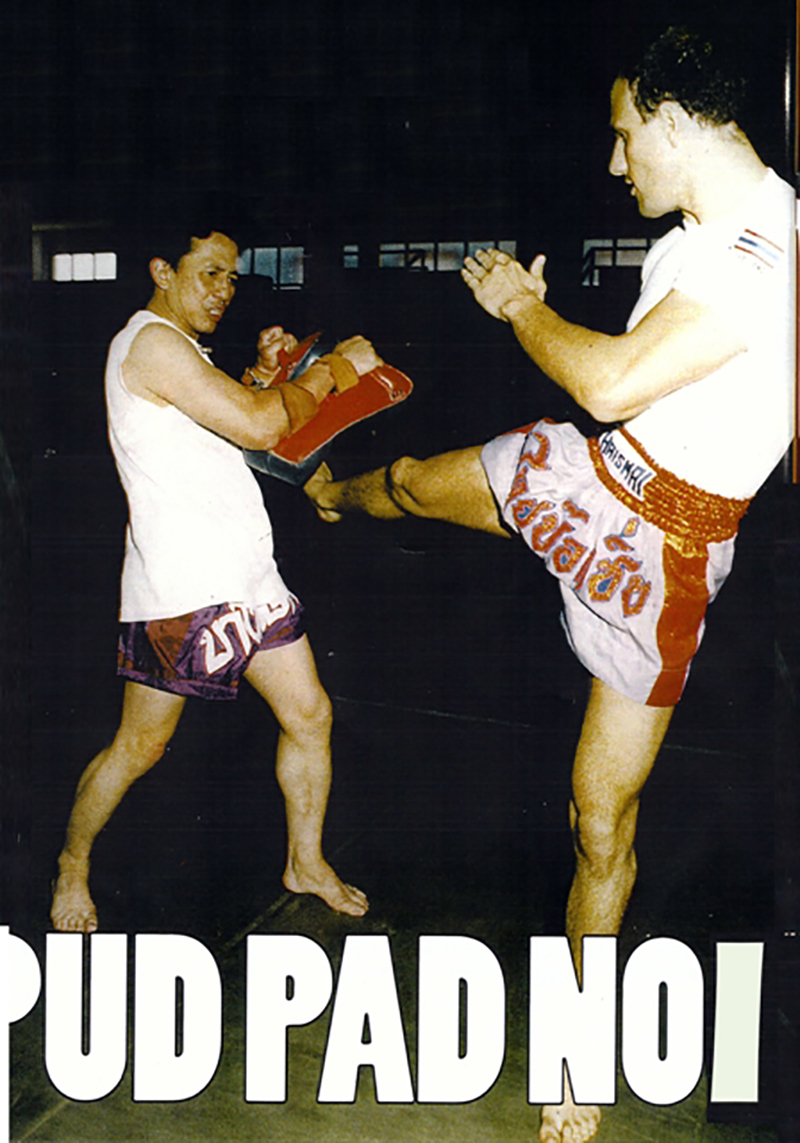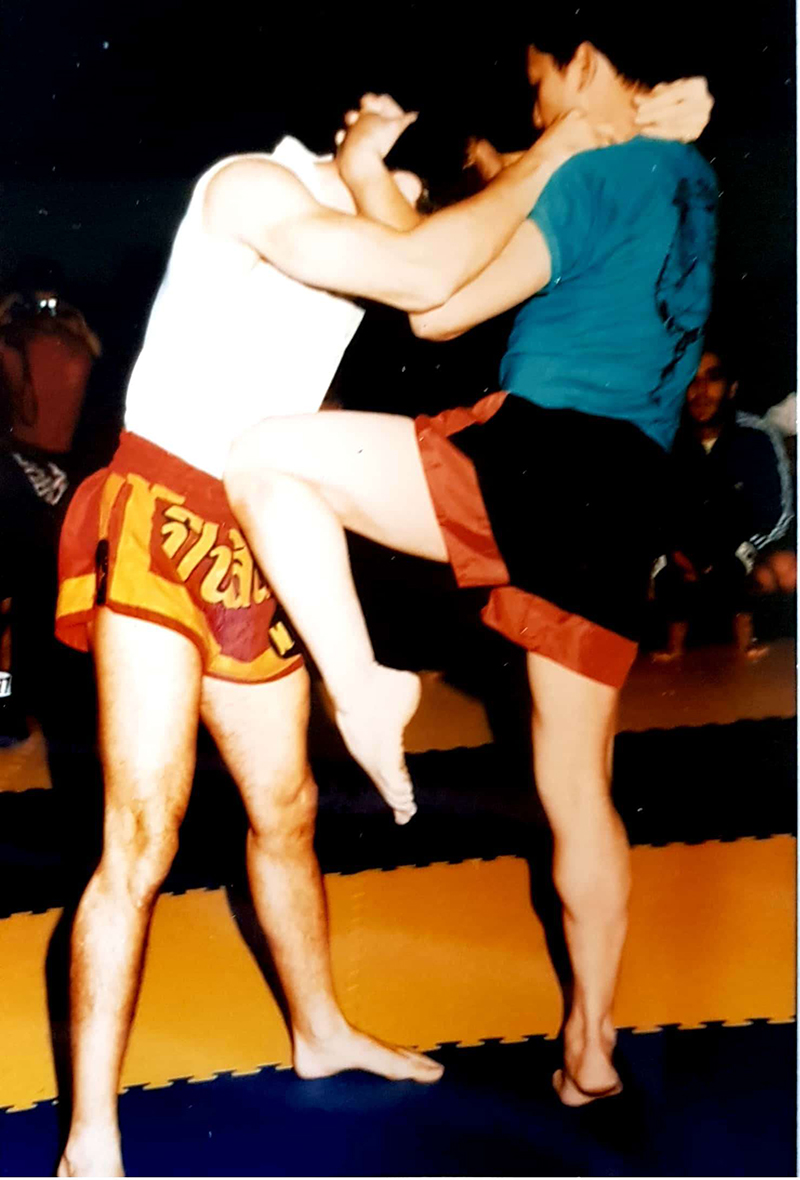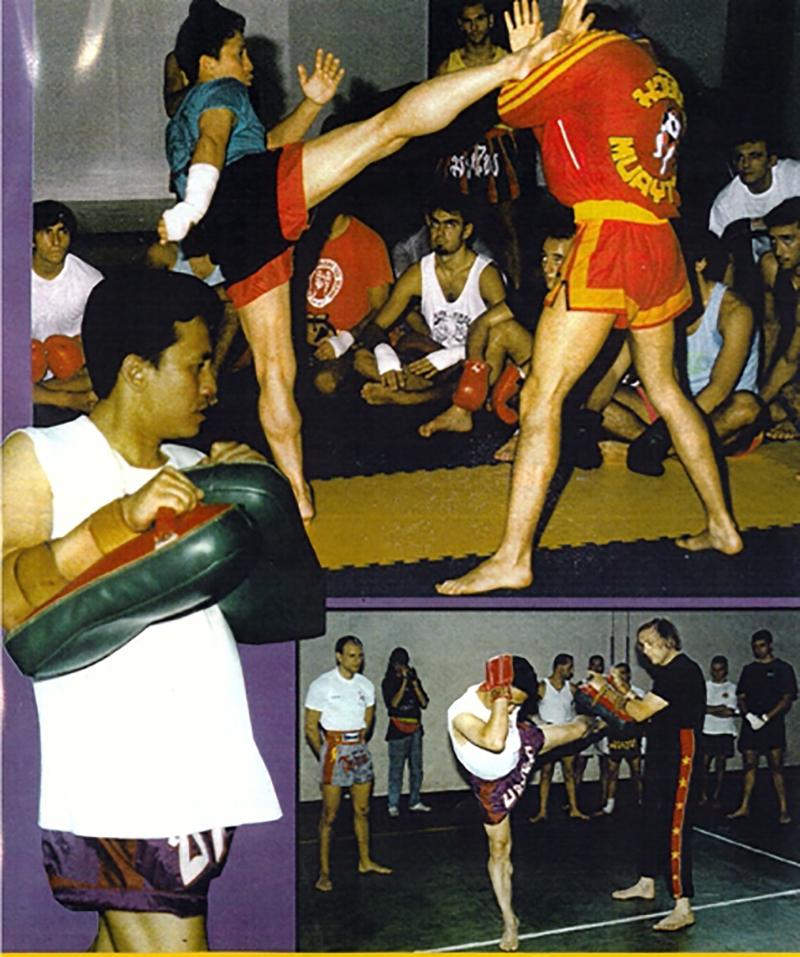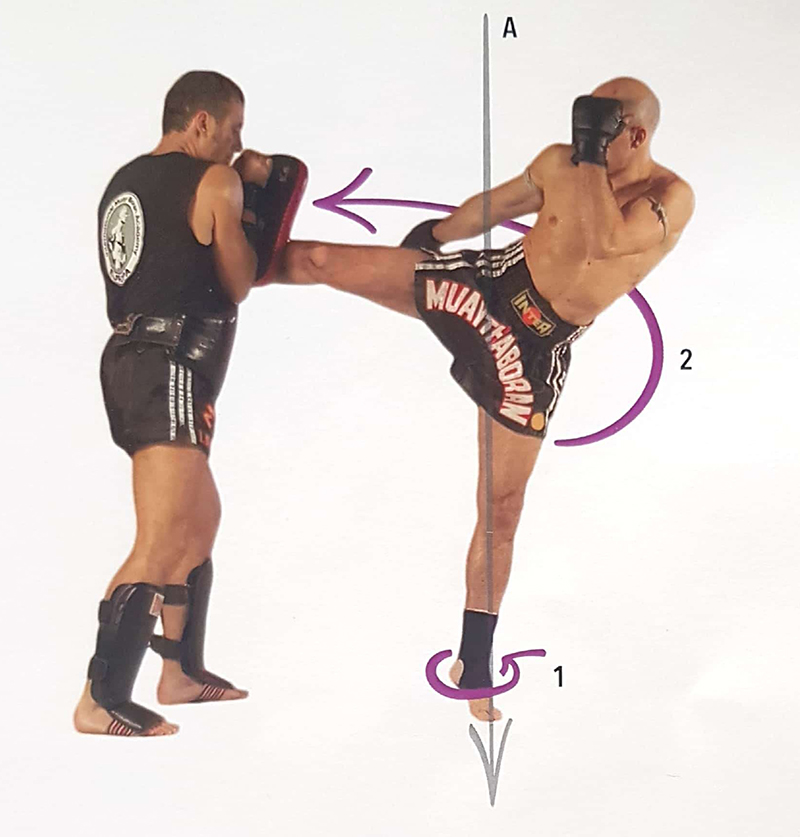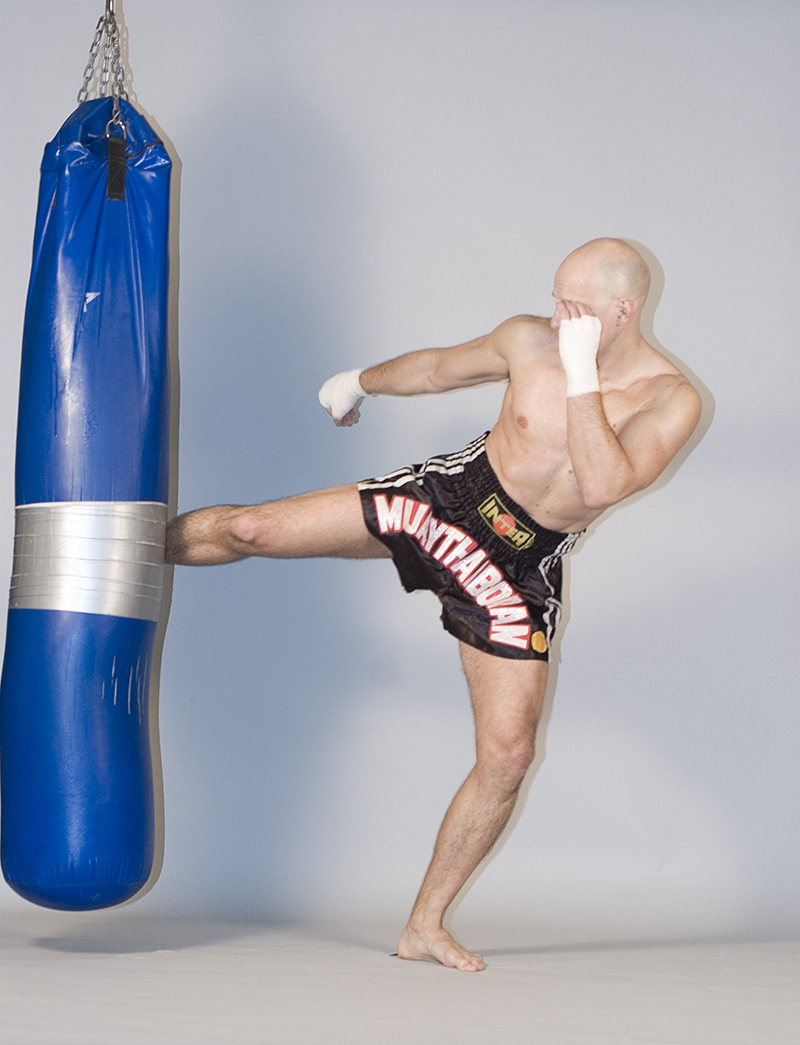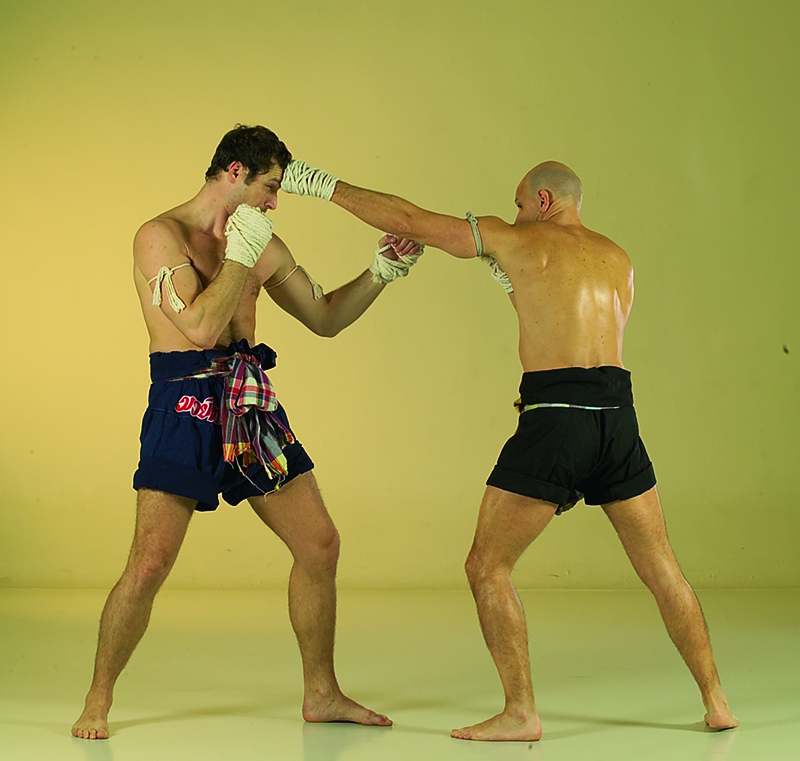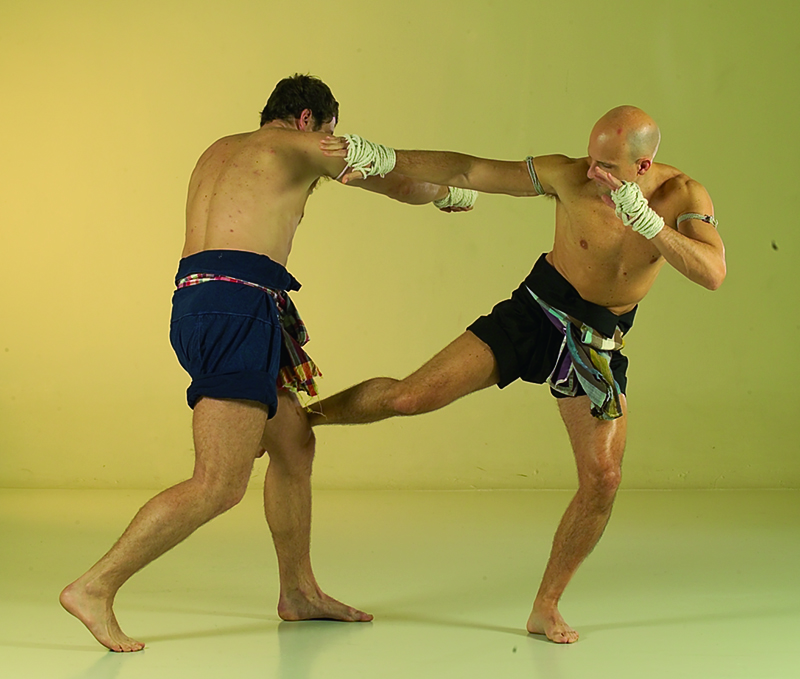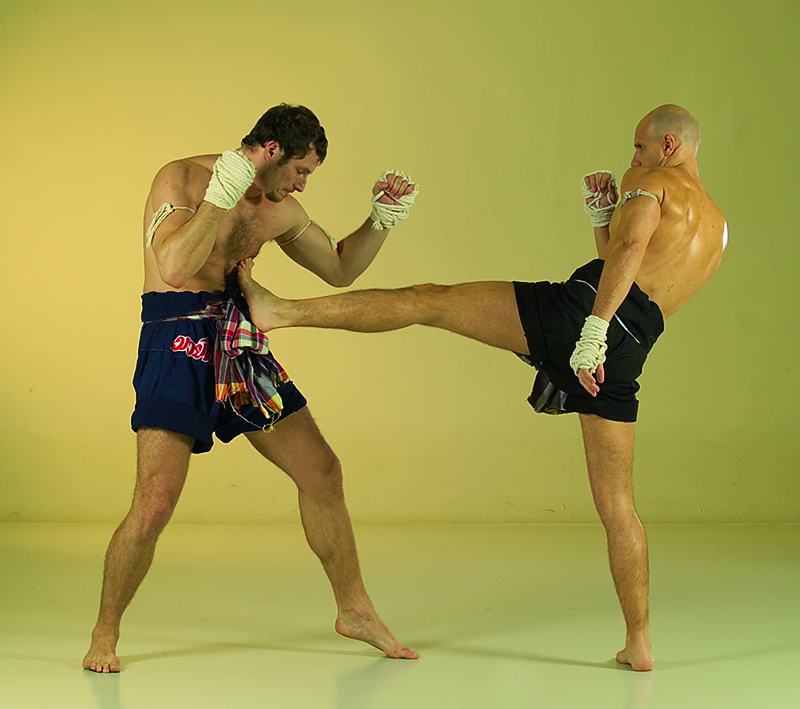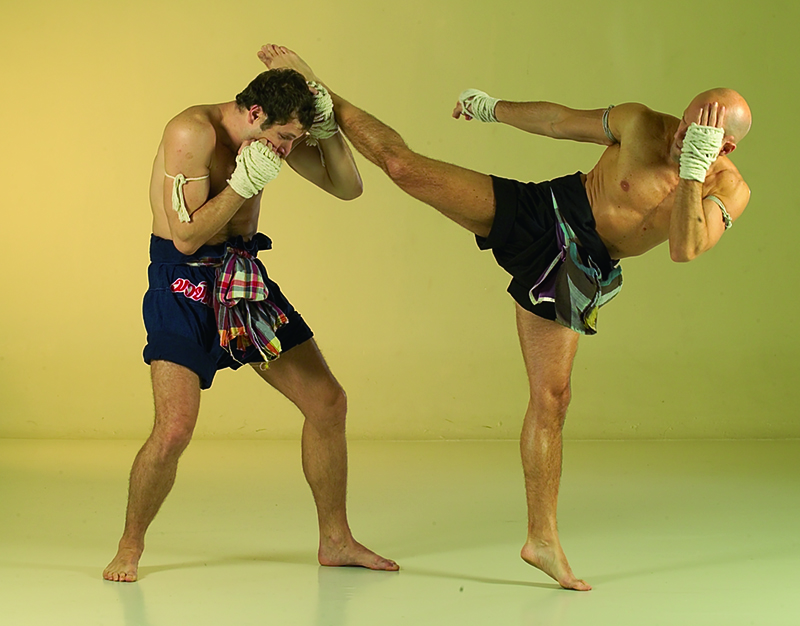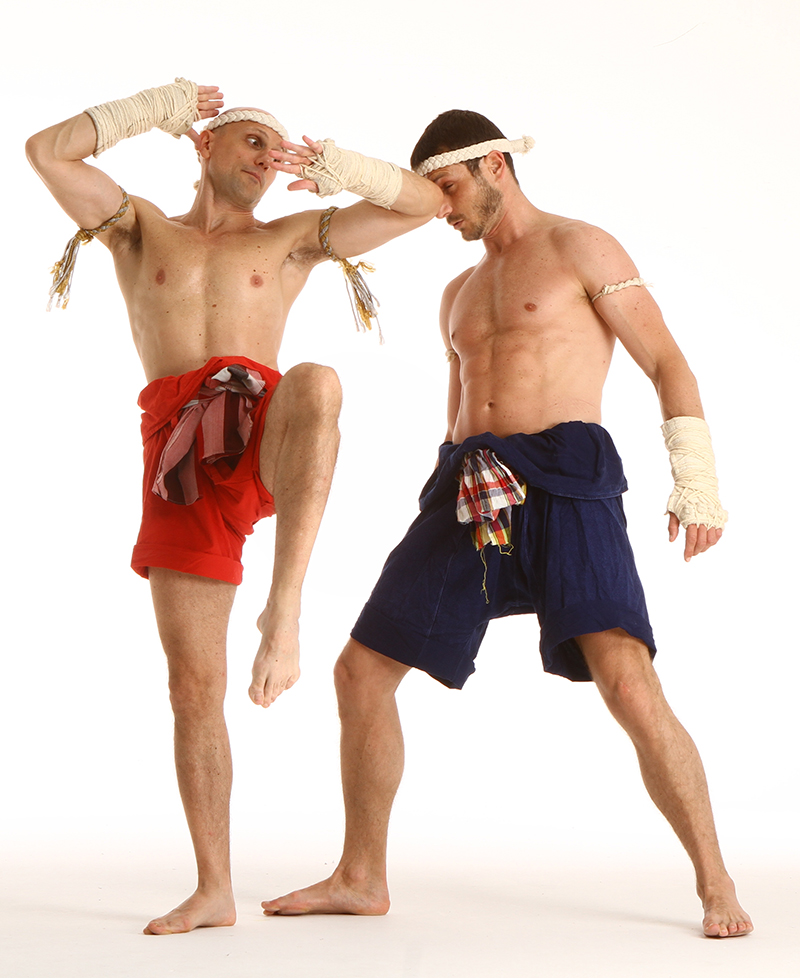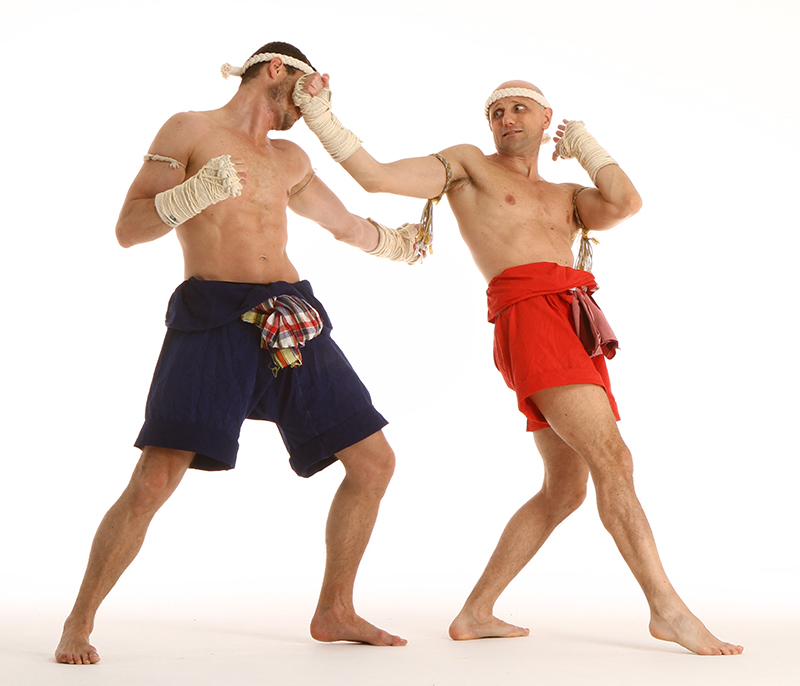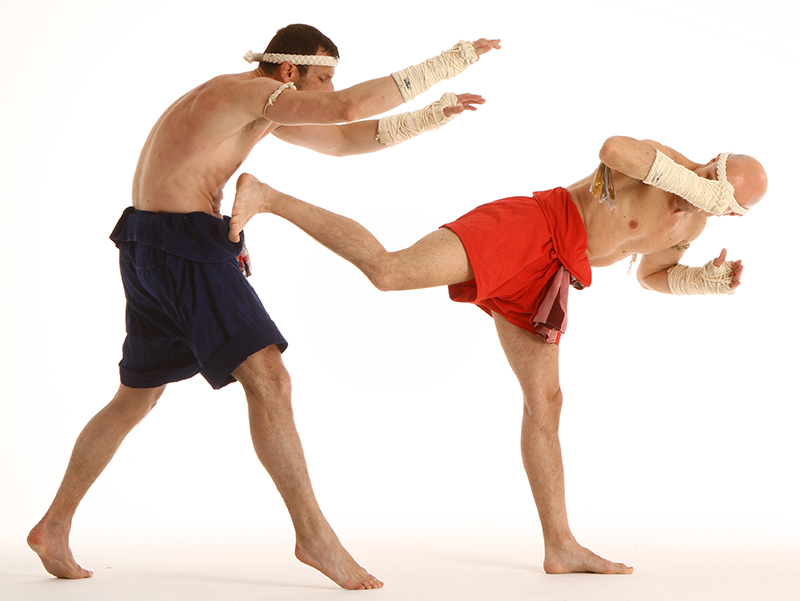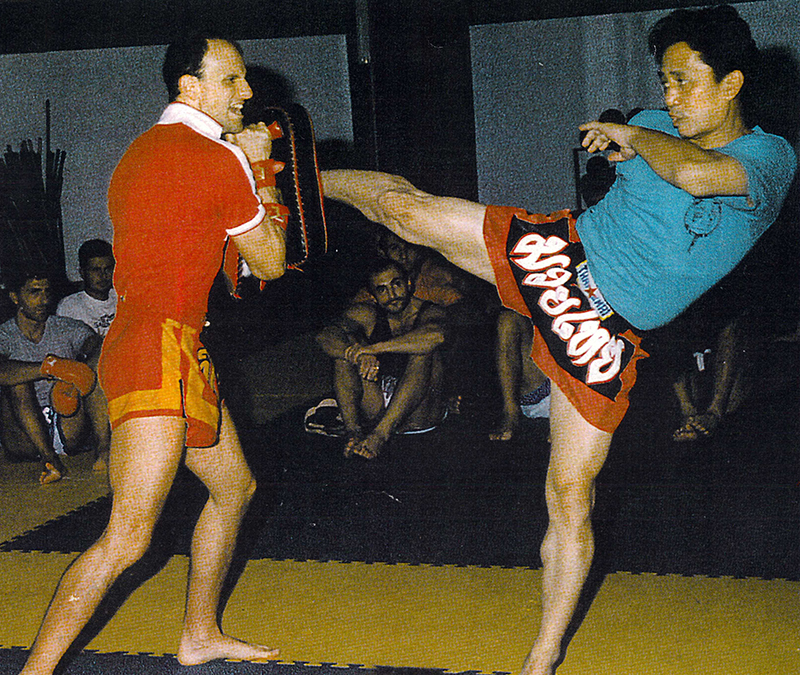
Pud Pad Noi Worawoot, king of Muay Thai kicks
by Marco De Cesaris.
His nickname was Golden Leg, because of the deadly efficiency of his roundhouse kick. His overpowering Tae Ken Ko (neck kick) made him climb speedily the top ten ranking of Rajadamnern stadium. His fighting style was characterized by a clever combination of roundhouse kicks (middle, high or low) and fearsome elbow attacks. In fact, he used a vicious elbow blow to the chin to defeat Huasai Sittiboonlert in their memorable fight on April 5, 1974.
His Tae Wiang was so effective that, after the famous Apidej, one the greatest fighters of the older generation, it was Pud Pad Noi whose name could be mentioned alongside the best kickers of all-time.
Omglin Pon (Pud Pad Noi’s real name) started his fighting career in his home province (Khonnkaen) and thanks to his ability in using the Tae Wiang (swing kick) he quickly made a name for himself and in the end became champion in 3 different weight divisions, fighting more than 100 times. He fought with “guts and style” and for that he was loved by the fans. However, many observers stated that his real secret was his flawless ability in using the Muay Thai weapons par excellence, the Tae Wiang.
I consider myself extremely lucky to have met him in the early 90’s and I will always be grateful to him for having shared his immense skill with me. I remember that he always told me to focus my training on the Middle Kick (Tae Lam Tua) because that was the bedrock of all other Muay Thai kicks. In fact, even after his retirement from competitions, he still was in a very good shape because he never stop practicing swing kicks on the bag and on the Thai Pads. He didn’t like to grapple with opponents because that kind of close range fighting would deprive him of precious energies that he would prefer to use for fighting at long distance (kicking range).
He taught me how to cope with an adversary who was skilled enough to close the distance and try to grapple: he simply had developed a few basic strategies to anticipate the attempted neck holds with short knee blows and strike immediately with cutting elbow blows to the head. The preferred targets for his elbow strike were the corner of the chin or the temple and the result, when the blow connected, was often a dramatic knock out. If the opponent didn’t go down for the count he most often stepped back to get out of range of Pud Pad Noi’s fearsome elbow attacks and he found himself again at kicking range that is where our hero wanted him to be, in the first place.
The Champion insisted so much on training the Roundhouse Kick simply because he considered it the most important weapon in a thai boxer’s arsenal. In fact, in Muay Thai circles, the Tae Wiang was considered the King of kicks. A seemingly instinctive technique actually full of intricacies if you search for a perfect execution. When he taught me to swing kick, Pud Pad Noi had to correct the way I used to perform Tae Wiang many times before my technique started to seem a real Muay Thai kick.
In fact, this maneuver is typically Thai and shouldn’t be confused with other similar (but profoundly different) kicks coming from other sources (Chinese, Koreans, Japanese). The real Thai Roundhouse kick is based upon specific principles that, as the story goes, were inspired by the way elephants swing their relaxed trunk by turning their heads. The trunk keeps relaxed but nevertheless is capable of striking with great power when it impacts against the target. This image was very common for Thai people and very clear in the minds of the unknown inventors of this technique.
The technical features of Tae Wiang are as follows:
1.It is based upon several laws of physics (Newton’s 3rd law, kinetic energy, friction, inertia):
-Newton’s third law states that when two bodies interact, they apply forces to one another that are equal in magnitude and opposite in direction. The third law is also known as the law of action and reaction. In a properly executed Tae Wiang, the forefoot of the standing leg presses on the ground exerting downward force and receiving equal energy in opposite direction (upwards). This downward push must be the initial action of the whole kick, all of the times (see line A in the image). This linear energy has to be immediately converted into circular motion thanks to the coordinated turn of the standing foot and the standing leg (which is kept straight) followed by the hips of the kicker (see number 1 and 2 in the image).
-Kinetic energy is the energy possessed by an object in motion. Kinetic energy is directly proportional to the mass of the object and to the square of its velocity. The formula is as follows: KE = 1/2 m v2. All attacks in Muay Thai represent an application of Kinetic Energy whose main source is the core of the body (hip turn). Given the body mass of the kicker, the faster his hips turn the more Kinetic Energy will be expressed by the kicking leg. An explosive hip twist is mandatory in order to swing the leg around similarly to a baseball player (hitter) that powerfully swings his bat to hit the ball.
-Friction, force that resists the sliding or rolling of one solid object over another. In order to turn his hips explosively, the Muay Thai kicker has to start his motion from the standing foot that must swivel around. To do that as fast as possible, his foot must lessen the friction on the ground (the resisting force) by keeping the smallest possible surface in contact with the floor. Only the forefoot should be in contact with the ground during all the phases of the kick (going forward and coming back to base).
-Inertia, property of a body by virtue of which it opposes any attempts to put it in motion or, if it is moving, to change the magnitude or direction of its velocity. Therefore, if your round kick misses, the inertia of your leg (and body) will tend to keep you spinning around and as a consequence expose several weak points to a possible counterattack. In order to compensate this disadvantage, the kicker has to apply one of the many possible counter-measures to a missed swing kick (see point 4).
2.The Thai swing kick typically employs a durable body weapon (the shin bone) that can be made steel-hard thanks to specific impact training routines (Pud Pad Noi is a great example of that). Shin condition is one of the most debated aspects of Muay Thai training. Pud Pad Noi’s left shinbone was famous for being much thicker and harder than a “normal” man’s. Whenever I asked him about his conditioning routines, he candidly answered that he just had been kicking using his shins for most of his life. No special potion nor hard-core conditioning procedure (rolling glass bottles over his shins or battering them with sticks or hammers) was part of his training regimen. Just many, many rounds of heavy bag work and thai pads, on a daily basis.
3.This kick can be used to attack various targets at low, middle or high level. Tae Wiang is a mighty weapon that is able to inflict damage to almost any area of the opponent’s body, in the front, side or back. If a Thai swing kicks connects with the ribcage it can shatter the bones easily. If the shin or instep hits the neck full-force it can cause a sudden drop of the opponent, that will most probably be knocked out. The low roundhouse kick to the inner or outer thigh is a trademark of Muay Thai that many a styles adopted for its unquestionable efficiency. A swing kick to the back of the neck, to the spine or to the kidneys is a fierce attack, banned in most combat sports but not in Muay Thai.
4.It is wise not to employ a Tae Wiang directly, unless when it is applied on an already stunned opponent. In fact, all good trainers teach their boxers to prepare the swing kick with a punch or foot jab to pave the way to the leg attack. For example, a quick jab to the eyes can be followed by a low roundhouse kick to the thigh.
Another typical opening technique for the swing kick is the straight body kick. In fact, this was one of the favourite combinations of Pud Pad Noi that he taught me since lesson one. Usually, the front leg is employed to deliver a straight kick to the solar plexus or the lower abdomen. This sort of foot-jab is quickly followed by a Tae Lam Tua or, even better, Tae Ken Ko. Pud Pad Noi used this combination over and over again in his fights and many an opponent can attest its terrible efficiency.
5.In the heat of the battle, when both fighters are constantly moving around, sidestepping and dodging, it is possible that a swing kick is detected before it lands, and therefore evaded. If the roundhouse kick misses, one has to develop a series of follow-up maneuvers (elbows, kicks, punches) to avoid being countered by the opponent. For example, one of the preferred follow-up technique in case of a missed high swing kick is a spinning back elbow strike or Sok Glab Lang.
Without putting a stopper in the body spin, the kicker swings the elbow opposite to the kicking leg (left elbow for a right kick and vice versa) aiming at the opponent’s side of the head. The best targets for this elbow blow are the temples or jaw.
Similarly, when the high kick misses and both the kicker the opponent managed to keep a distance, the spin is to be continued but the striking arm must be kept stretched instead of bent. As a result the forearm or the closed fist (back or bottom of hand) of the kicker will impact against the head of the opponent. This very powerful spinning punch is called Mahd Glab Lang.
In a third possible situation, after a missed Tae Wiang (low, middle or high) the two fighters find themselves at a long distance. This is usually due to a quick backward step of the defender who, instead of evading the kick by bending his upper body back, chooses to retreat. In this case, the best follow up is a spinning straight back kick. Just like the first two counter-measures applied at short and middle distance, the kicker, after missing with his attack, shall keep on turning and, using the energy of the body spin, shall unleash a spinning straight back kick aimed at the opponent’s midsection. The preferred targets for the follow-up kick are the liver and the solar plexus: the consequent knock down is almost sure coupled with excruciating pain due to the sensitivity of these two weak points.


